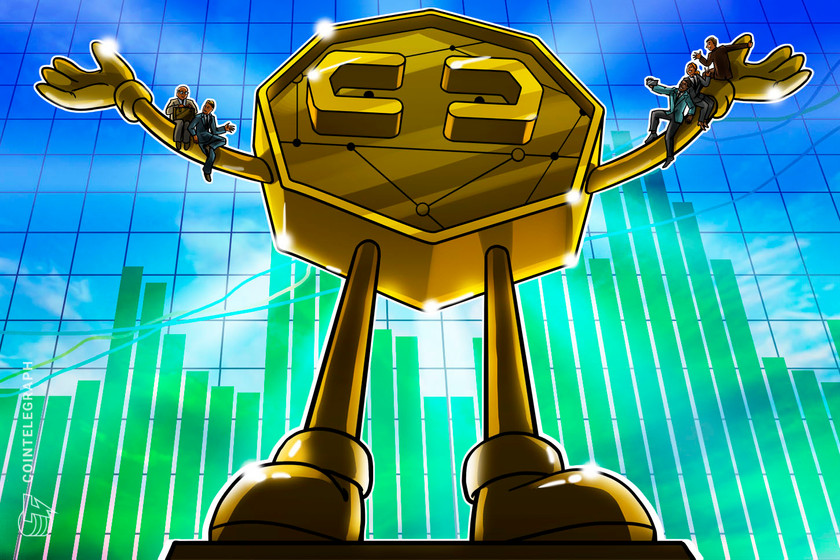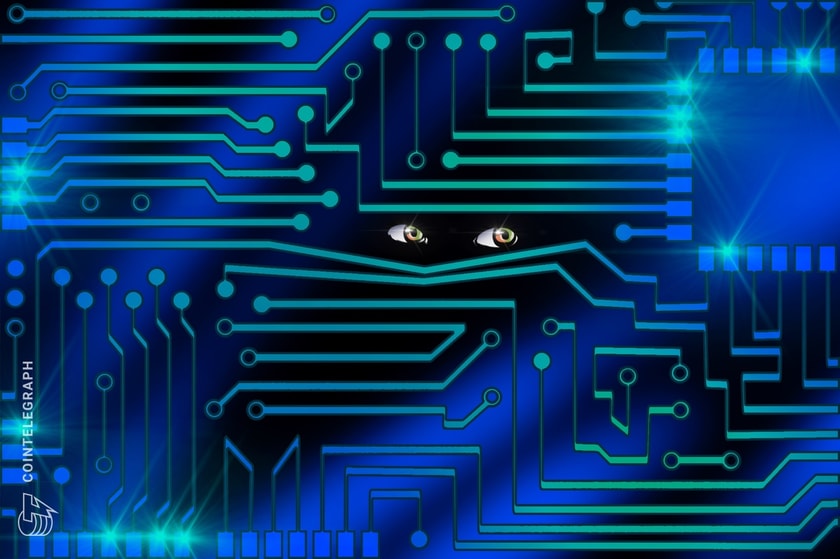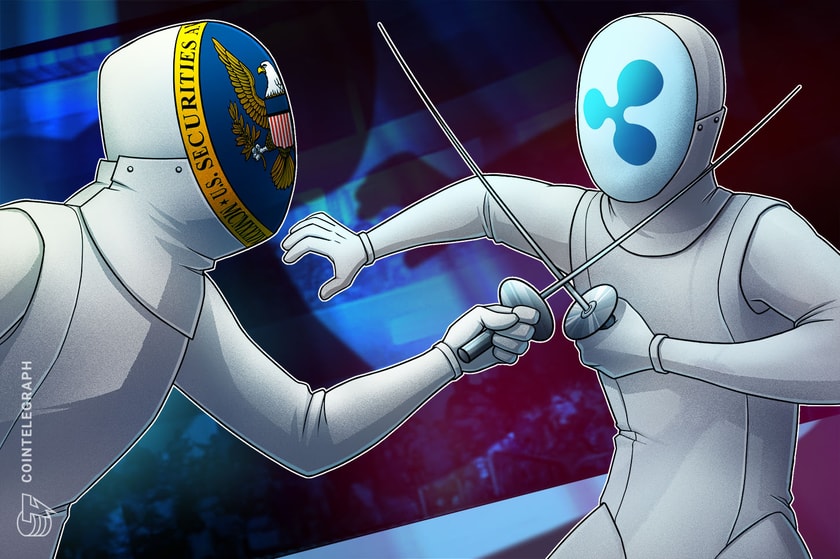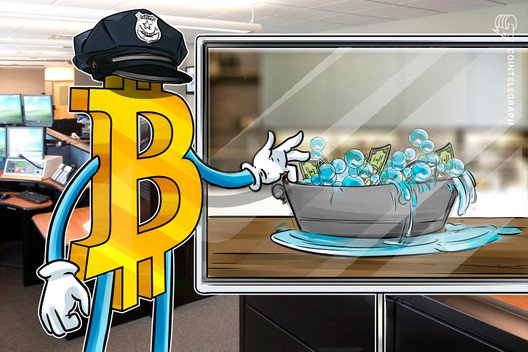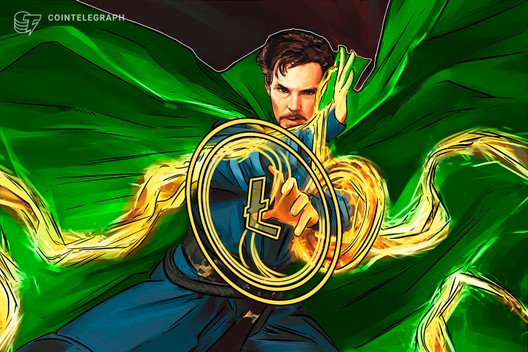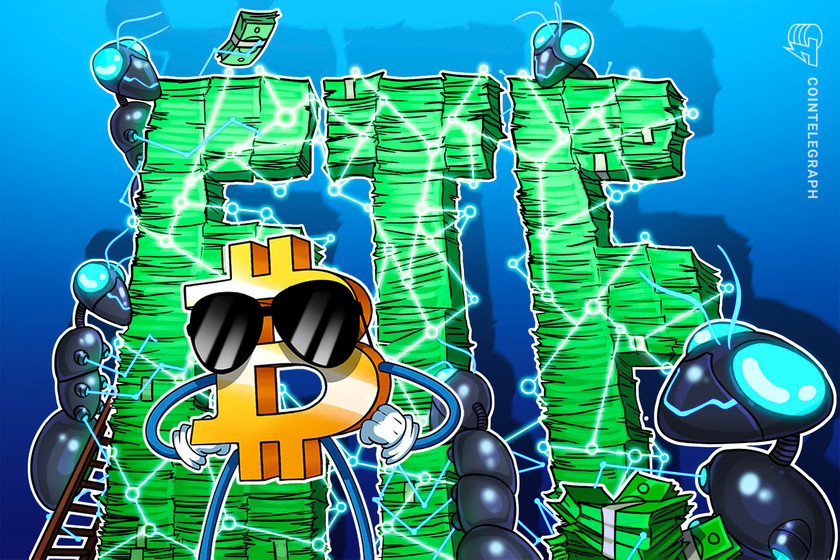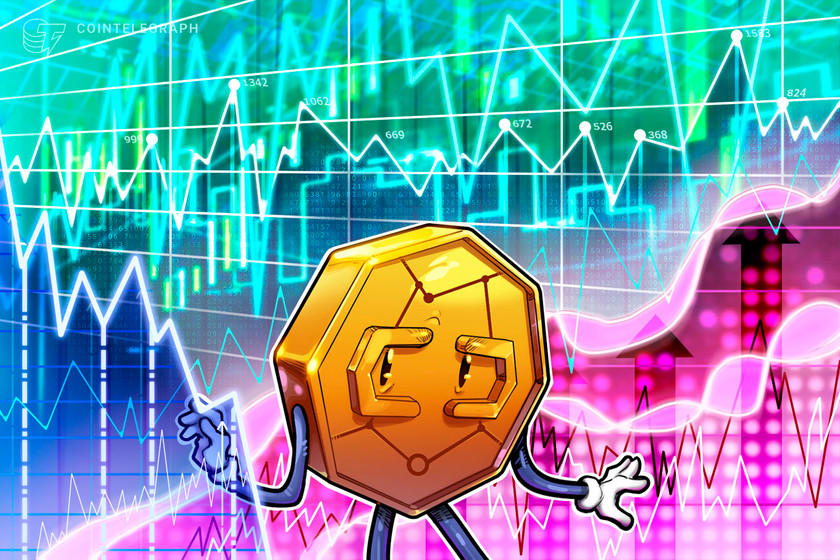Bitcoin gets physical: Art or digital heresy?
Since 2011, a group of enthusiasts and collectors have been obsessed with the physical manifestation of Bitcoin.
On the face of it, physical Bitcoin seems like a contradiction to the key terms that define it, so a trustless, instantly transferable virtual currency becomes a real world coin that has all the disadvantages of Earth-bound cash. But there are numerous advantages too when it comes to privacy, storage and ease of use — and they look pretty cool too.
“A lot of people know about Bitcoin, but very few people actually own Bitcoin. Even fewer own physical Bitcoin,” explains Bobby Lee, who has owned a 10 BTC coin since 2011 and designed and produced his own coins under the BTCC Mint brand until 2018. He added:
“Physical Bitcoins are a rarity, they’re sort of like Picasso and Van Gogh paintings were back in those days. Nobody realized how rare they were. I expect these physical Bitcoins will gain in popularity and appreciation by connoisseurs worldwide.”
Physical Bitcoin typically comes in the form of metal coins, with the private key hidden behind a tamper proof holographic sticker Although highly prized by collectors, Lee said the coins are also practical too.
“The reality is that it’s impossible for me to send people Bitcoin if they’re new to Bitcoin,” he said, referring to digital Bitcoin’s steep learning curve to set up wallets and seed phrases. “Physical Bitcoin, there’s no permission needed, I just hand it to them. Recently my cousin got married in Toronto Canada, and I was able to give them some Bitcoin as a gift and they didn’t need to set up a wallet, I just mailed it to them.”
A piece of history
For ‘cryptonumist’ Elias Ahonen, author of the Encyclopedia of Physical Bitcoins and Crypto-Currencies, physical Bitcoin is also a marker of history. “These coins are the physical manifestation, or artefacts, of Bitcoin in every technical phase,” he says. “Anything that happened with miners from the early Bitcoin era we can’t really point to, but these physical coins we can and collectors find that personally meaningful and also something worth preserving.”
Ahonen was a first year political science student at Wilfred Laurier University in Waterloo when he first became interested in Bitcoin.
“I had just bought my first Bitcoin on an exchange and not being technically sound, I was convinced I was going to lose my private key to the wallet and get locked out of my Bitcoin,” he said: “So I decided instead to buy the physical Bitcoins which held the private key inside of them.”
This turned out to be a wise move as he did indeed lose access to his original wallet ,fortunately with less than 1 BTC in it. And of course it led to a whole new career as a Bitcoin historian and coin broker. “It’s taken me around the world on all kinds of adventures where I pick up half a million dollars’ worth of coins at an airport coffee shop,” he said.

Multi billion dollar industry
Precise figures for the size of the industry are hard to come by, but almost $3.25 billion dollars worth of Bitcoin (at today’s prices) was minted under the original ‘Casascius’ coin brand between 2011 and 2013. More than 1.5 billion worth (or 44,000 BTC) remains unspent and out in the wild.
One of the most valuable is the 1000 BTC coin, three of which remain unopened out of the five minted. “It’s actually the most valuable coin in the world,” said Ahonen. Worth $35 million on face value alone today, it’d fetch considerably more as an ultra-rare collectible. That puts it ahead of its nearest mainstream rival, the ‘Flowing Hair Silver/Copper Dollar‘ from 1794 which last sold for $10 Million in 2013.
Right now you can snap up a 1 BTC Casascius coin from 2011 on eBay for $130,000. If your budget doesn’t stretch that far, there’s a 0.5 BTC coin from 2013 that’s a steal at only $30,000 – and there’s even an unfunded 1 BTC coin from BTCC Mint on sale for $4900. On Crypto De Change, they’re offering a 1 BTC ‘Titan One’ silver coin for just $15,100 (sadly, when you try to buy it you just get a 404 error).

Dim dark days of 2011
Physical Bitcoin traces its history back to 2011 when Utah computer scientist and Bitcoin contributor Mike Caldwell came up with the idea as an educational tool. “Bitcoin was very difficult to explain and in 2013 the average person simply could not get their head around it,” explains Ahonen, adding:
“The idea was that by taking this physical coin, and actually putting the Bitcoin inside of it, you could make a demonstration and say, look here’s a Bitcoin, I’m giving to you and now that you have it, I don’t control it.”
Caldwell’s first plan was to print out the private key to 1 BTC on a bit of paper, stick it in the middle of a washer, and seal both sides with tamper proof stickers. He quickly abandoned this in favour of something a little more high end, contracting a company that made brass tokens for amusement arcades to produce thousands of beautiful Casascius coins. They feature the Bitcoin logo, year and denomination, along with the slogan Vires In Numeris or ‘Strength in Numbers’.
The coins became popular and Caldwell introduced 5, 10, and 25 BTC coins, followed by gold plated bars with 100, 500 and 1000 BTC. As Bitcoin’s price surged in 2013, smaller denominations below 1 BTC began to appear.
“Crypto enthusiasts would buy these physical Bitcoins from Casascius and give them to friends and family as gifts,” recalls Lee, who’s brother Charlie is the founder of Litecoin. “And that’s precisely what my brother did.”
“That December (2011) he gifted me a 10 Bitcoin and paid about $50 for it. So it was relatively inexpensive. Obviously it’s now worth $100,000.”
By 2013 Caldwell had sealed 90,683.9 Bitcoin into metal coins — around half of which remain unspent in the form of 21,000 or so physical coins.
“It was very much a hobby, I don’t think he ever made any money, or any significant amount of money selling those,” says Ahonen. “Frankly, he took a huge amount of personal risk by basically handling the private keys. He was actually concerned that someone would come and hurt him (to steal them).”

The Feds object
The whole exercise came to a shuddering halt in 2013 when the Financial Crimes Enforcement Network contacted Caldwell to accuse him of operating an illegal money transmitting business, and he was forced to wind it up.
“It put a damper onto the physical Bitcoin thing,” Ahonen said. “That’s where the rise of these buyer funded coins really came from and also other larger companies that actually have money transmitter licenses.”
A raft of different manufacturers, from boutique artisans to big companies, sprang up in its wake, producing not only Bitcoin but also Litecoin, Dogecoin and Ethereum among others. They included bhCoin, Lealana, Microsoul, Nasty Mining, Recalescence Coins, Ravenbit, Alitin Mint, Cryptmint, Titan Bitcoin and Satori Coin. Ahonen detailed the works of 50 different outfits in his 286 page encyclopedia in 2015, and leveraged the contacts he made writing it to produce a new book called Blockland.
Bobby Lee’s BTCC Mint
The BTCC Mint was an offshoot of Lee’s exchange, BTCC and produced some of the most sought after physical Bitcoin until the company changed hands in 2018. Lee designed the coins himself — “I see myself as an artist having created BTCC Bitcoin” — with the first coins released in early 2016.
“The idea was to take advantage of our BTCC Mining Pool, to mine fresh uncirculated coins into the physical Bitcoins. Over the three years we ran the BTCC Mint business, we minted over 8,700 BTC worth of physical Bitcoins.”
Lee and a select group of highly trusted team members inserted the private keys into the coins by hand. He added:
“I handled the private keys with extreme caution, and have properly deleted all private key data, so naturally, there have been no reports of funds lost or stolen from any BTCC Mint products. I’m most proud of that pristine track record.”
This touches upon one counterintuitive aspect of physical Bitcoin — it breaks the crypto commandment of: ‘don’t trust, verify’. Ahonen points out that purchasers need to completely trust the manufacturer and everyone in the production process as it’s impossible to tell if the coin even contains a private key, or if it does, if the manufacturer kept a copy.
“Bitcoin comes from a specific type of philosophy, which is around not your keys, not your Bitcoin. It very much goes against the concept of trusting other people. But with any type of physical Bitcoin, you effectively are trusting the person created to not have the private key. So there is this implicit paradox.”
Symbols of wealth
While BTCC Mint coins featured a Bitcoin logo and the slogan “In Crypto We Trust”, other coins featured artwork that attempted to capture the philosophy behind cryptocurrency. “I would say that with some there’s a very stark, very clear symbolism, which is very philosophical,” explains Ahonen. “With others, it will clearly be something more difficult to decipher and may be personal to the creator.”
There are plenty of circuit boards, bulls and rockets going to the moon, as well as mining pools, Greco Roman warriors, Buddhist imagery, famous figures like Adam Smith and Satoshi Nakamato and historic events like the collapse of Mt Gox and Bitcoin Pizza. “For me personally, the most striking had a burning bank that was on fire,” Ahonen said: “And the bankers were kind of crying on the steps as people were pulling down the pillars of the bank using chains which obviously represent blockchain.”

Not just keepsakes
Apart from collecting, there are a couple of real world uses for physical Bitcoin too. One is for inheritance planning. “Several of my buyers actually have been looking for physical Bitcoin because they want to put them in a safe deposit box for the purposes of inheritance,” he said: “They have got 100 individual coins, and will split them up with the kids evenly – which is much harder if you have exchange accounts or (have BTC) on wallets or USB sticks.”
Physical coins are also the ultimate privacy coins as there’s nothing to associate the owner with an address and they can be traded a million times without ever leaving a record on the blockchain. Theoretically of course, this would make physical Bitcoin a very attractive way to launder money or pay for drug deals, hence the interest from the U.S authorities.
“I don’t know of anyone specifically using it that way,” Ahonen said carefully. “But you could very easily imagine someone using that way, it’s extremely plausible.” He went on to add: “It’s the same as having gold coins. You can hide them, you can do anything with them. No one can really track them.”
Where did all the manufacturers go?
Sadly, physical Bitcoin’s best days appear to be behind it, with one of the last commercial scale manufacturers, Denarium, closing down in July 2020 after producing more than 15,000 coins. Lee believes that increasing regulations and the sky high Bitcoin price have made the logistics more difficult.
“You can’t sell physical Bitcoins in the U.S. due to regulations and as Bitcoin gets very expensive, it’s very cumbersome to ship in the mail,” he said. “There’s lots of inherent risks, insurance needs and so on.”
Ahonen added that there are still numerous hobbyists doing it as a labor of love or as a side project: “It’s a niche thing, but they do exist.”

Lee’s Ballet Wallet is probably the closest living relative — it’s a metal card with a QR code address and a scratch off wallet passphrase. Able to be used by complete noobs with zero technical knowledge, the wallets support 50 cryptocurrencies and more than $28 million worth of cryptocurrency is currently held on them.
“The inspiration for Ballet came in large part from how much customers loved the simple design of the BTCC Mint physical bitcoins,” he said. Lee designed it to appeal to our different senses, you can feel the design as it’s in relief and there’s a real heft to it as opposed to a plastic credit card.
“You can also hear it. I mean literally if you tap on the table that’s the sound of Bitcoin. And we have a surprise feature where if you actually scratch the QR code you can smell it.”
He scratches it off an empty wallet and holds it up to my nose. It smells like perfume. But don’t bother licking it though, as Lee didn’t come up with anything for taste.
Bank on the future
While the heyday of physical cryptocurrency appears to have passed for now, what about the future? Is there any chance that after Bitcoin becomes the world’s reserve asset that we’ll see 100 Satoshi notes being used for everyday purchases?
Lee thinks this isn’t likely, due to the need for trust:“So that’s why it’s not very feasible to have real Bitcoin embedded in physical form and go for 100 satoshi (coins) circulating in the real world. I think physical Bitcoin will remain in the art, limited edition … collector’s world, just like gold coins.”
But Ahonen sees a future for physical Bitcoin outside of art and collecting: “I do believe that there’s a future for physical Bitcoins simply because they’re such a simple way to hold and verify through the use of an intermediary.” He added:
“I mean, grandma can buy it and put it in her safe deposit box. It’s not necessarily as feasible to do that with a USB stick with whatever program that gets outdated. It’s fairly future proof and fairly idiot proof. And I could see banks, or some sort of institutions creating some sort of physical Bitcoins in the future.”

